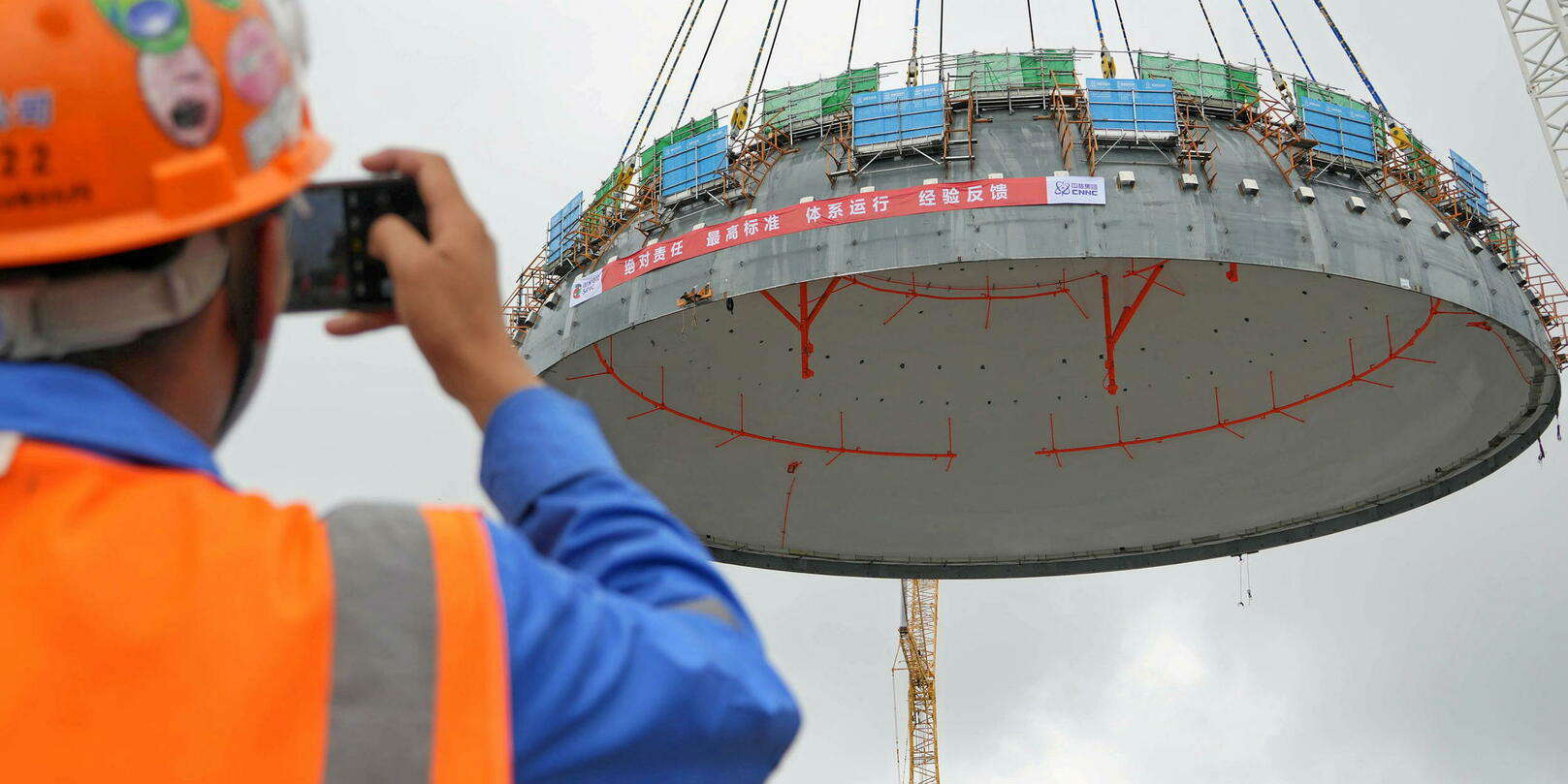Comment la Chine va devenir le leader mondial du nucléaire
Soutenu par des prêts publics bonifiés et des tarifs garantis, Pékin a transformé l’atome en filière souveraine, rationalisée et moins chère.
Par Thomas Graindorge Publié le 23/10/2025 lepoint.fr

Presque autant de réacteurs en construction que le reste du monde réuni. Cela pose l'importance prise par la Chine en matière d'énergie nucléaire. Comme le souligne le New York Times, si le pays dirigé d'une main de fer par Xi Jinping continue son entreprise à un rythme aussi effréné, il devrait dépasser, en 2030, la capacité nucléaire des États-Unis.
Une performance d'autant plus impressionnante que les installations chinoises sont dérivées de modèles américains et français. « Les Chinois avancent à toute vitesse », a déclaré Mark Hibbs, chercheur principal au Carnegie Endowment for Peace et auteur d'un livre sur le programme nucléaire chinois. « Ils sont très désireux de montrer au monde que leur programme est invincible. »
Pour cela, ils ont diminué de moitié les coûts de construction du nucléaire, passés sous la barre des cinq dollars par watt, quand les États-Unis sont à plus de quinze dollars par watt. La construction des deux seuls réacteurs américains de ce siècle, à la centrale nucléaire de Vogtle à Waynesboro, en Géorgie, a duré onze ans et coûté 35 milliards de dollars.
Des investissements en toute confiance
Le gouvernement chinois soutient massivement cette politique, notamment en permettant à des développeurs nucléaires publics de bénéficier de prêts à taux réduit garantis par l'État pour construire de nouveaux réacteurs. Le gouvernement chinois exige également des opérateurs de réseau électrique qu'ils achètent une partie de l'électricité produite par les centrales nucléaires, à des tarifs avantageux.
Le mandat national de développer l'énergie nucléaire signifie que les entreprises peuvent investir en toute confiance dans des usines nationales et une main-d'œuvre d'ingénierie dédiée. À l'inverse, en Occident, la construction nucléaire a été ralentie, notamment aux États-Unis, par l'augmentation des taux d'intérêt et le renforcement des règles de sécurité par les autorités de régulation.
Parallèlement, les promoteurs privés ont expérimenté de nouveaux modèles de réacteurs nécessitant des composants différents et ont introduit de nouvelles complications. Le contraste est devenu flagrant à la fin des années 2000, lorsque les compagnies d'électricité américaines ont tenté de relancer l'énergie nucléaire avec un nouveau modèle de réacteur, l'AP1000, doté de caractéristiques de sécurité améliorées. Les développeurs ont rencontré des difficultés avec cette nouvelle technologie.
« Ce que les Chinois ont fait était vraiment intelligent »
La Chine a construit des AP1000 au même moment. Mais au lieu d'abandonner, les responsables chinois ont analysé les problèmes et ont conclu qu'il était nécessaire d'ajuster la conception et de développer des chaînes d'approvisionnement nationales.
« Ce que les Chinois ont fait était vraiment intelligent », a déclaré James Krellenstein, directeur général d'Alva Energy, cabinet de conseil en nucléaire. « Ils ont décidé de marquer une pause de quelques années et d'en tirer les leçons. » La Chine construit actuellement neuf autres exemplaires de ce réacteur, connu sous le nom de CAP1000, tous en voie d'être achevés d'ici à cinq ans – et pour un coût minimal.
Le programme nucléaire accéléré de la Chine est le prélude à un objectif plus vaste : dominer le marché mondial. Les entreprises chinoises ont déjà construit six réacteurs au Pakistan. Parallèlement, la Chine s'efforce de surpasser les États-Unis en matière d'innovation technologique. Elle a construit le premier réacteur de « quatrième génération » au monde, un modèle refroidi au gaz capable de fournir chaleur et vapeur à l'industrie lourde en plus de l'électricité.